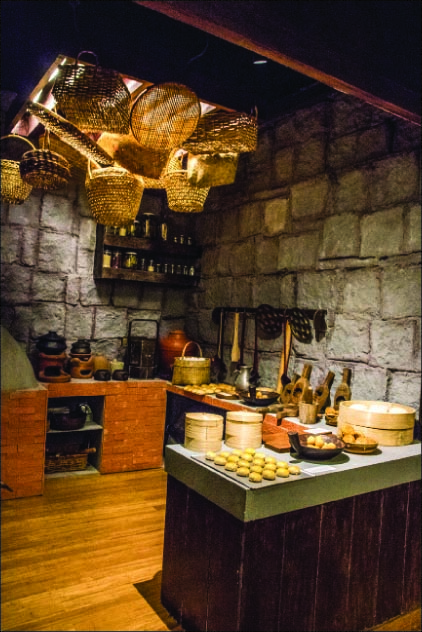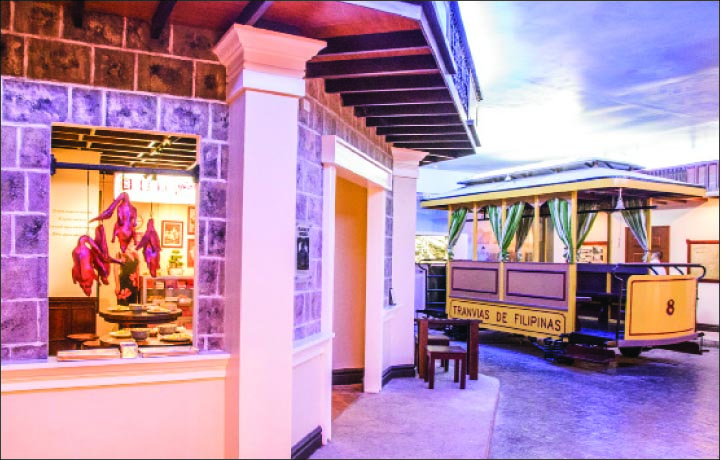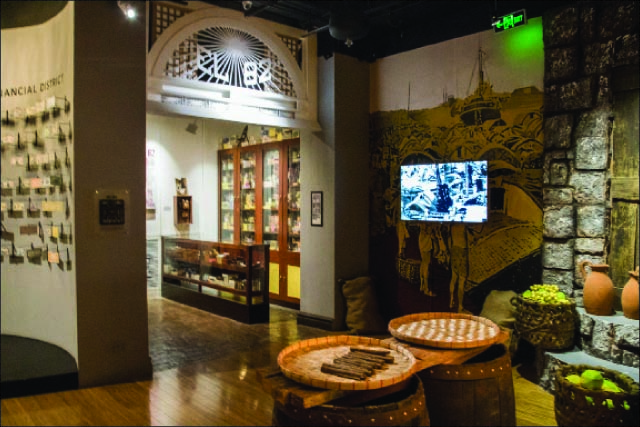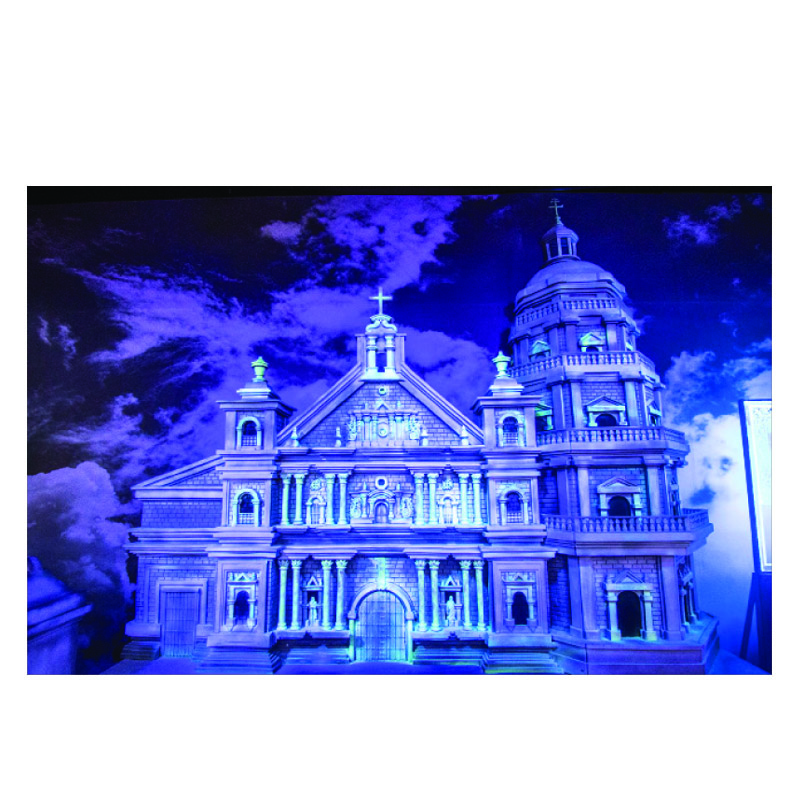
The list of museums in Metro Manila has grown longer with the opening of the new Chinatown Museum.
Located at the Lucky Chinatown Mall, this is the second museum that Megaworld Corp. has opened, the first being the Iloilo Museum of Contemporary Arts in 2018.
With several more museums in development, this is part of Megaworld’s strategy of adding value to their developments. Their plan is to integrate arts, culture and heritage into the overall character of their properties.
As expected this new museum has been drawing comparison with the Bahay Tsinoy Museum in Intramuros. While both museums explore the topic of the Chinese in the Philippines, each tackle it from a different perspective.
Bahay Tsinoy tells how the Chinese came and influenced Philippine culture and history. It documents the legacy of the ethnic Chinese in all aspects of the life of the nation. It has only one section on the Parian and old Binondo photos. In fact, it was Bahay Tsinoy which encouraged the curator of Chinatown Museum to focus on Binondo heritage.

The Chinatown Museum is more about the events that shaped Binondo’s reputation as a business hub.
To share the story of Binondo, the museum identified 18 historical events and trends that shaped its history. These are then interpreted into the 18 permanent galleries that make up the museum’s main exhibit area. Aside from that, there are four other galleries that are meant for temporary exhibits. The museum also intends to hold occasional workshops and lectures, as a way of building its reputation as a venue for learning.
What can set Chinatown Museum is its high-tech approach in helping visitors understand its narrative. Some of the descriptions for the exhibits are on pre-recorded videos, others are in the museum’s smartphone app. However, the museum’s app is not working yet, so I am not sure how complete the narrative of this museum is.
Upon paying entrance fee, visitors to the museum are given a paper bracelet which acts as their ticket to the exhibits. Visitors might want to check out the gift shop next to the ticketing booth after going through the exhibit. It offers Binondo themed souvenir items that are not available outside the museum. Among them are pencil cases, T-shirts, refrigerator magnets and stickers. There is also a good selection of books for children and adults about Philippine history and culture.

To get started, visitors view a video which explains Binondo’s creation story. Among the panel of experts chosen to be part of the introductory video are Bahay Tsinoy’s Teresita Ang See and Old Manila Walks’ Ivan Man Dy. From here, visitors enter the first gallery which focuses on Binondo’s Catholic roots. Highlighted here is the story of Binondo Church, as well as the various Catholic icons that are associated with Chinatown such as San Lorenzo Ruiz (the first Filipino saint who had Chinese roots) and Our Lady of the Rosary.
This then progresses into the gallery that deals with Binondo’s history as a trading hub. The main emphasis here is the Alcaceria de San Fernando, the former textile market/custom house.
From here the museum proceeds to the gallery that focuses on the rise of the mestizo class. It showcases their lifestyle and the influence they wielded. Then we move on to Estero de Binondo which is about the beginning of industrialization in the country.
The rising status of Binondo as a commercial hub is represented by the exhibit of a Binondo trader, Don Roman Ongpin, and his store EL 82. Since Ongpin was a supporter of the Philippine revolution, his exhibit marks a clever transition to the next section that is about the role Binondo played in the 1896 Philippine Revolution.

Finally, the last gallery focuses on Escolta as Manila’s then premiere street. It even comes with a full-size tram. One of the unique features here is a space for temporary exhibit inside the jewelry store, La Estrella del Norte.
Currently ongoing is an exhibit dedicated to the 100th year anniversary of St. Stephen High School, the oldest Protestant Chinese school in the Philippines. Up next will be the 120th anniversary of Tiong Se Academy, the first Chinese school to open in the country.
By the time I reached the Escolta gallery, it was quite apparent how much thought and effort went into the design of the museum. Museums around the world now have to make their exhibits eye-catching enough for social media. This is in order to attract more visitors to come, take pictures and post them on Instagram perhaps, thereby encouraging more people to come to the museum. And while they’re at it, they could be learning something from the exhibits as well.
After the Escolta gallery are two other temporary exhibit spaces: one is an exhibit dedicated to Philippine postal history and another on paintings on coconut shell by the artist Benadette Solina Wolf. The availability of such exhibit spaces opens up exciting possibilities for artists based in Binondo and nearby areas to have a venue to exhibit their artworks.
One thing I like about this museum is how it tries to be interactive. In the Chinese drugstore, for example, there is a chest of drawers where visitors can learn about various Chinese herbs. To make it more interesting, they are even encouraged to learn and distinguish the aroma of the herbs.
Another part that stood out for me is the exhibit on EL 82 and Roman Ongpin. It would be good if the museum can expand on Ongpin’s story further. I also like the part about the opium den, as it depicts the harsh reality the Chinese laborers faced. It was a brave move to feature an opium den – showing how hard the lives of the Chinese migrants were and what some of them did to cope with the loneliness and hardship of being migrants: the backbreaking work and the hardships they had to endure drove them to seek solace in opium.

The Escolta’s section, however, needs more work, particularly as to why it was the premiere street then. For example, it could have been cited as the first place where movies were shown in the Philippines.
It certainly was frustrating that the app was not working, as it made my visit to the museum feel incomplete. Facts were stated, but not the context or background. For example, it mentioned that Binondo started out as a community for Catholic Chinese, but not why that was so. And what about the non-Catholic Chinese? Why were they segregated?
So visitors for the meantime do need to pay attention to the pre-recorded videos as they feature experts like Prof. Richard Chu of the University of Massachusetts, Prof. Fernando Zialcita of Ateneo de Manila and Prof. Lorelei de Viana of Far Eastern University.
But I have to say, the museum is still in the making and improving. I visited the museum a couple of times more since my first one, and with each new visit, I found that the museum has set up more descriptions to help the visitors understand the exhibit better.
Megaworld has to be commended for setting up the museum. It will certainly go a long way in helping develop civic pride for the people of Binondo of their community. My hope is that this museum will encourage the people of Binondo to take a deeper look into the rich history of the district that they live in.





